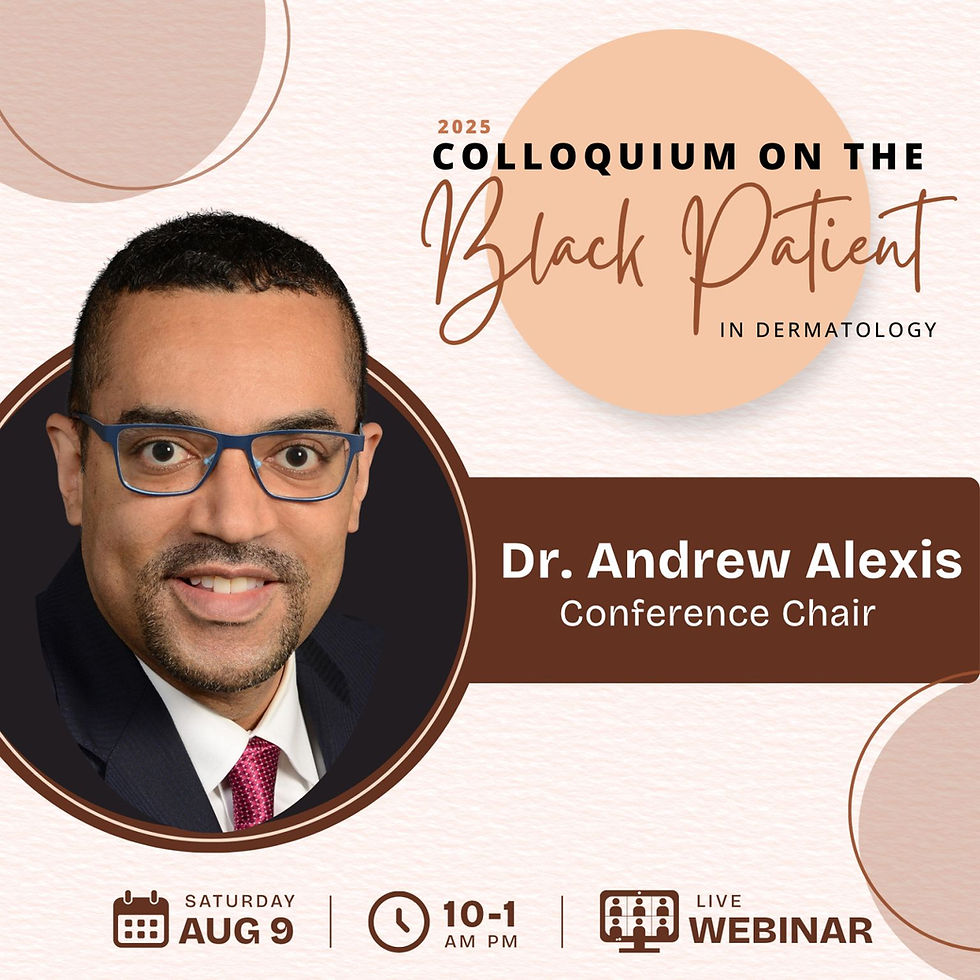AD, soft tissue infections prevalent in Indigenous communities
- John Evans
- Aug 2, 2021
- 2 min read
The top two skin diseases seen in Canadian Indigenous communities are atopic dermatitis (AD) and skin and soft tissue infections (SSTIs), noted Dr. Rachel Netahe Asiniwasis in her online presentation at the 1st Indigenous Skin Spectrum Summit. This conclusion is documented by literature, healthcare provider/patient experiences, and media reports, she said.
Highlights of her presentation are published in the June, 2021 issue of The Chronicle of Skin & Allergy, a clinical news magazine published by the parent company of Derm.City.
The First Nations Regional Health Survey (2008/10) of Ontario reported that AD had been diagnosed in 10% of children at a mean age of around five years, and was the top reason that caregivers and patients sought care (70%), in spite of barriers to care. The prevalence of AD in children may be up to 16.5% on reserve through a Canadian study conducted in Labrador by Forsey in 2014, in which most cases were reported as moderate to severe.
“Chronic itching can affect people just as much as chronic pain and should not be dismissed,” said Dr. Asiniwasis, a dermatologist in Regina who also provides in-person and teledermatology services to northern Indigenous communities. She is biracial, being half Plains Cree and Saulteaux background on her father’s side, and half English on her mother’s side.
An impaired skin barrier means people with AD have a high baseline risk of secondary skin infections, she noted. These infections can often be communicable diseases, such as MRSA and non-MRSA.
A retrospective chart review of adults in remote First Nations communities across Canada by Jeong (2020), showed that over a 12-month period, 60% of adults had been prescribed at least one antibiotic, with a 37% prevalence of SSTIs, in which 40% were community-acquired MRSA. The authors of the report concluded that these populations are hard to reach and under-represented in the standard surveillance system.
“When you consider barriers unique to these remote populations—such as poor access to and inflated costs for basic skin care products needed for the fundamentals of bathing and moisturizing—and add environmental issues such as water restrictions and crowded housing, you end up with a potential disaster, and that's what we're seeing on these reserves, especially in children,” Dr. Asiniwasis said.




Comments